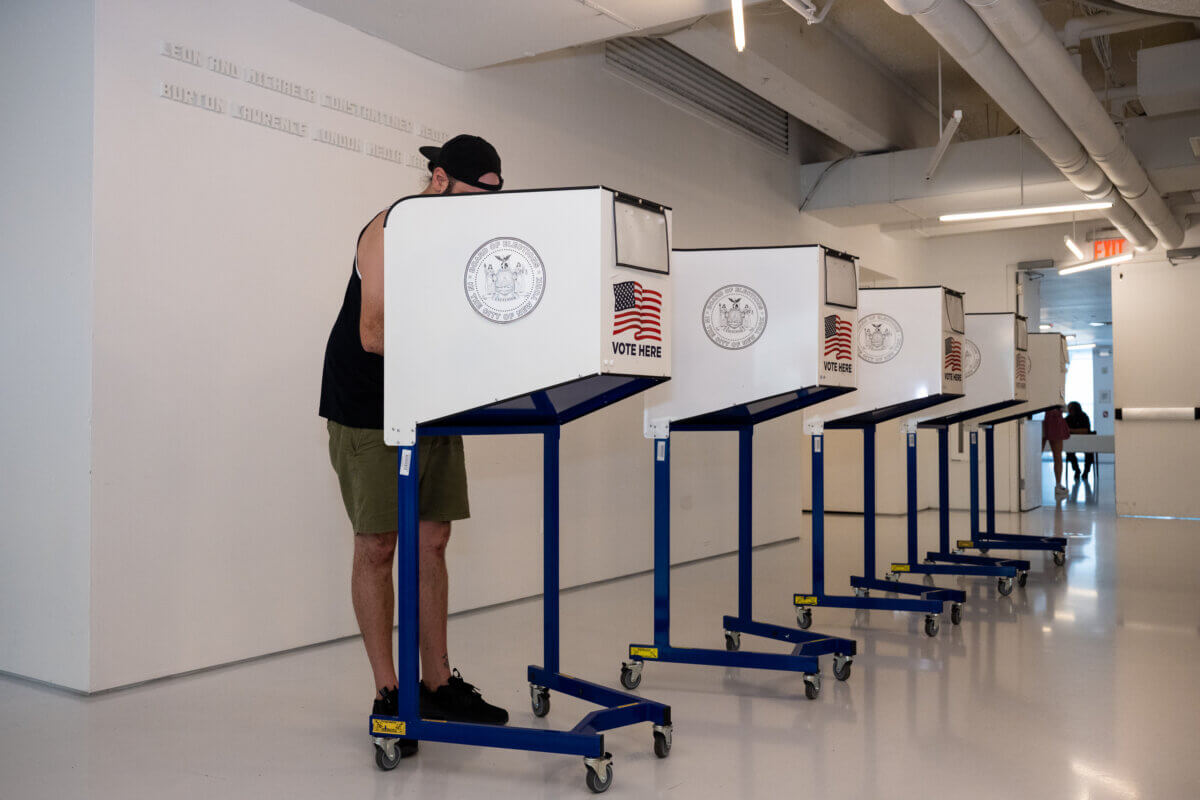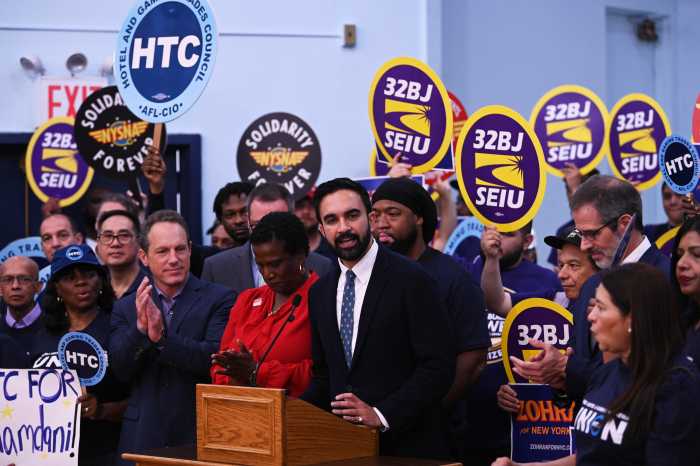A state panel on Thursday almost unanimously agreed on a new set of Congressional maps that largely resemble the current ones, moving a nearly two-year process one step closer to its possible conclusion ahead of multiple key House races this fall.
Democrats were hoping the new plan would give them an edge over Republicans in five swing districts that went red under the current lines in 2022. But the agreed-upon maps only give Democrats a real advantage in two upstate districts, while mostly leaving everything else unchanged.
The state’s bipartisan Independent Redistricting Commission (IRC), which is made up of an even number of Democratic and Republican appointees, advanced the new district lines by a 9-1 vote during a Feb. 15 meeting.
Prior to the vote, Commission Chair Ken Jenkins acknowledged that the redistricting process that was supposed to have wrapped up in 2022, but has been drawn out by a series of court challenges, has not been an easy one.
“This process was a challenge and there were certainly bumps in the road,” Jenkins said. “But the work of the Commission based on all of the legal input that we have had requires compromise.”
However, the lines must still be approved by two-thirds majorities in both chambers of the state legislature, which are controlled by Democratic supermajorities, in order to be put in place.
State Senate Majority Leader Andrea Stewart-Cousins, in a statement following the vote, did not indicate whether or not her chamber would support the plan.
“The Senate Majority is eager to receive the proposed map submitted by the IRC,” she said. “We plan to discuss and decide our subsequent actions soon, taking into account the election cycle calendar. This process is critically important and we are committed to conducting it in a manner that upholds fairness and democracy.”
One state Senator, James Skoufis (D-Orange County), has already come out in fierce opposition to the maps and said he plans to vote against them.
“After two years of hand-wringing for a fair Congressional map, the only thing ‘bipartisan’ about the Independent Redistricting Commission’s proposal is that both parties are seeking to protect their incumbents,” Skoufis, in a statement before the vote. “These maps are a disgrace and ought to be rejected by the Legislature.”
An uncertain timeline

It is also unclear when the state Senate and Assembly will bring the plan up for a vote, said Jeff Wice — a New York Law School professor and redistricting expert. Lawmakers are not back in session until Feb. 26 and petitioning starts on Feb. 27.
“Can the legislature get this done in time and would it consider cutting back the number of signatures and the period of time to collect petition signatures?” Wice asked. “I think that would be better than delaying the date, pushing the primary off to September.”
Wice said Gov. Kathy Hochul or the state legislative leaders — Stewart-Cousins and Assembly Speaker Carl Heastie — could also call their members back to Albany to vote earlier.
Additionally, with one state Senator already openly against the plan, Wice said it is far from certain if the legislature will approve the maps or draw their own.
“We know of one democratic defection so far in the Senate, will there be more?” Wice said. “And will there be bipartisan support in both chambers for this map? So there’s still some questions. This is not over yet.”
Biggest changes north of the Bronx

The most crucial change in the plan is that Congressional District 22, which covers central New York and is currently represented by Republican Rep. Brandon Williams, was reconfigured to be more favorable to Democrats.
The other changes of note were to Congressional Districts 17 and 18 in the Hudson Valley, both of which were redrawn to favor their incumbents — Reps. Mike Lawler (R) and Pat Ryan (D) respectively.
“The other changes don’t threaten any other incumbents,” Wice said.
The plan changed very little in the districts covering New York City and its suburbs.
The ICR was directed to reconfigure the maps in a ruling from the state’s highest court — the state Court of Appeals — late last year.
The case stemmed from a suit brought by a group of Democratic voters and backed by the party establishment, challenging the current maps, which were drawn two years ago by a court-appointed expert. Those highly competitive districts helped Republicans pick up four House seats in the 2022 midterm elections.
The Court of Appeals appointed the independent mapmaker — known as a special master — in spring 2022 after finding that the Democratic-dominated had heavily gerrymandered an earlier set of maps it drew.
The IRC’s vote comes just two days after Democrats scored a major victory with former Rep. Tom Suozzi winning a highly watched special election for the 3rd Congressional District, flipping the district from red to blue.
Read more: NYC Bill to Block ‘Arbitrary’ Shelter Stay Limits for Migrants





































